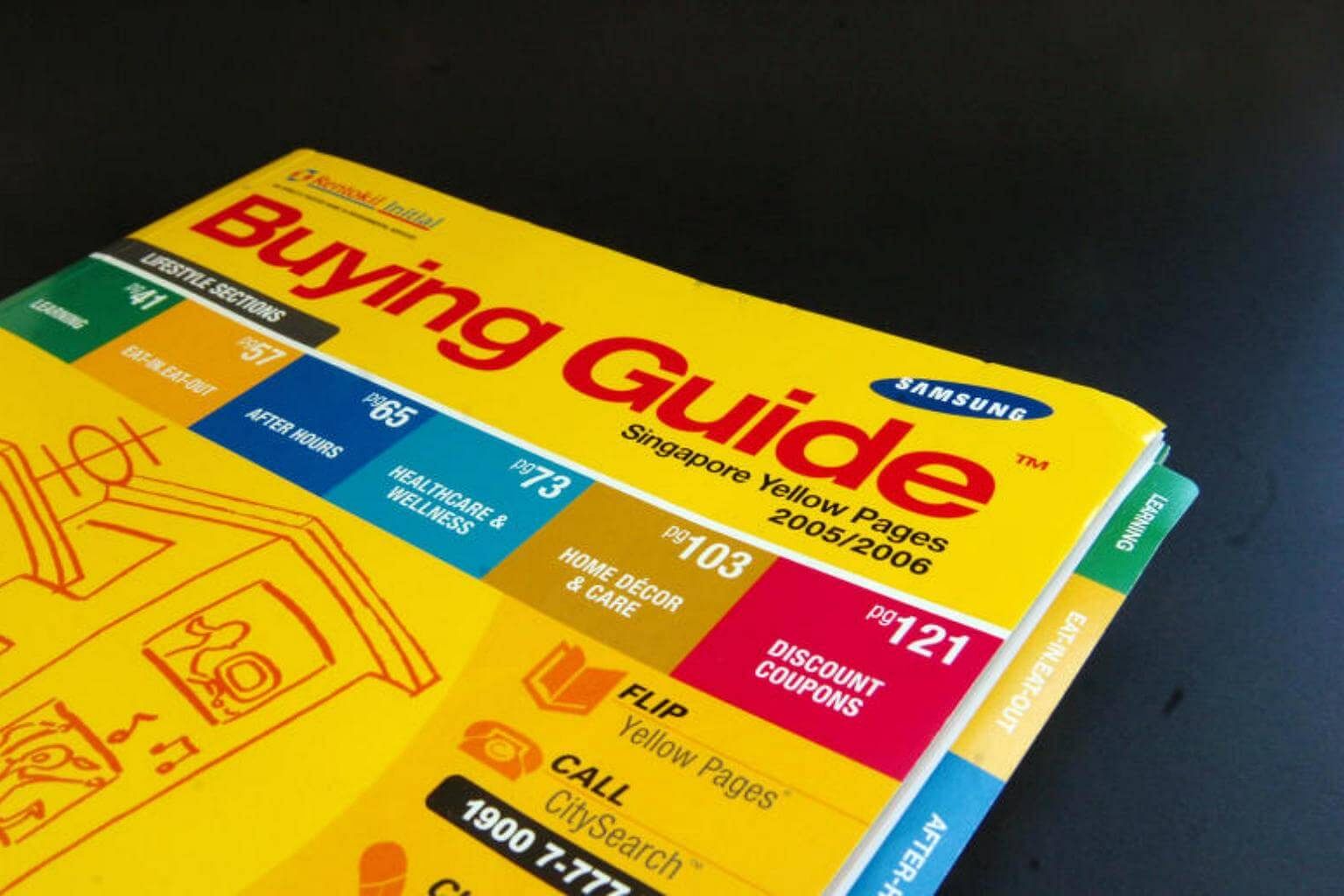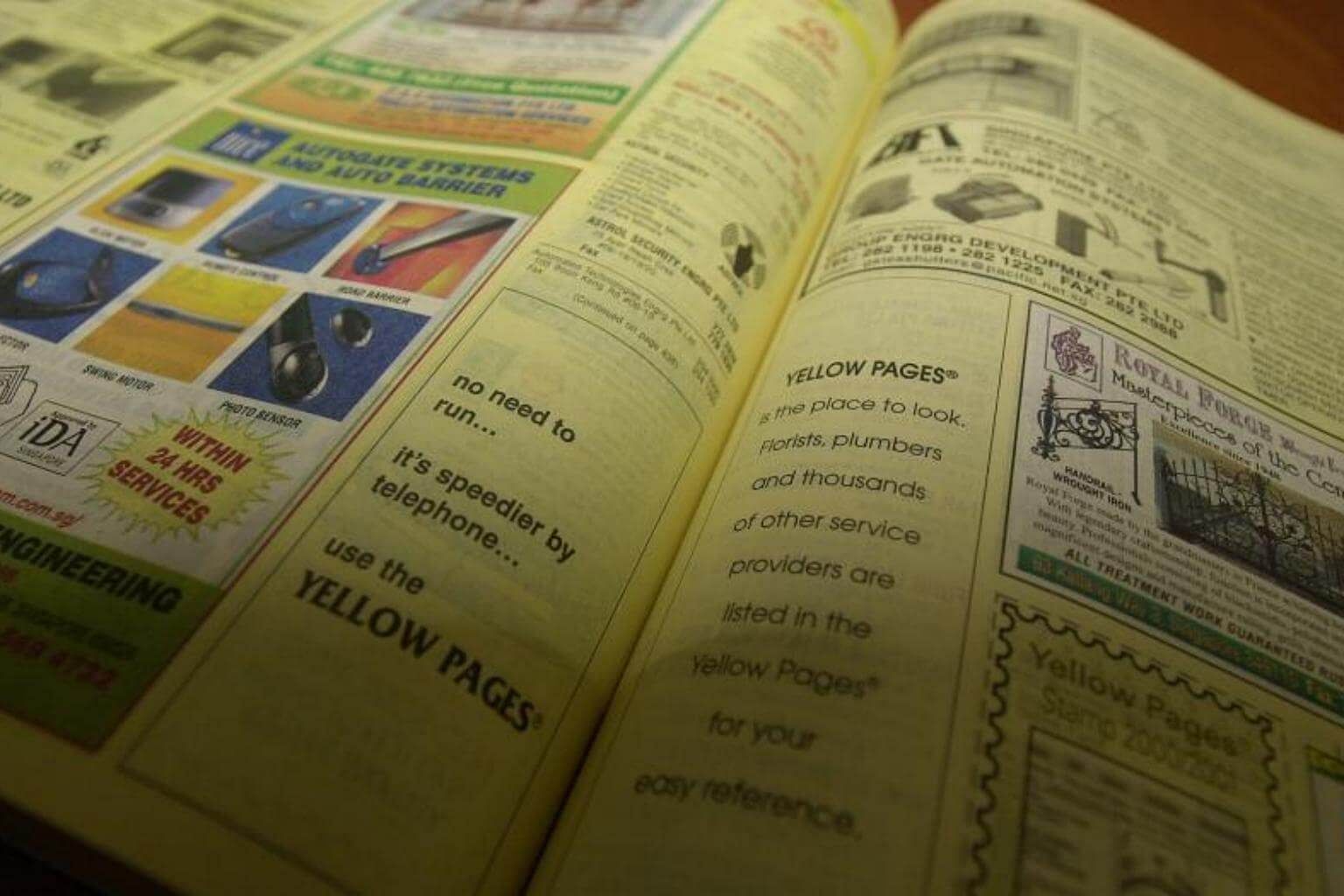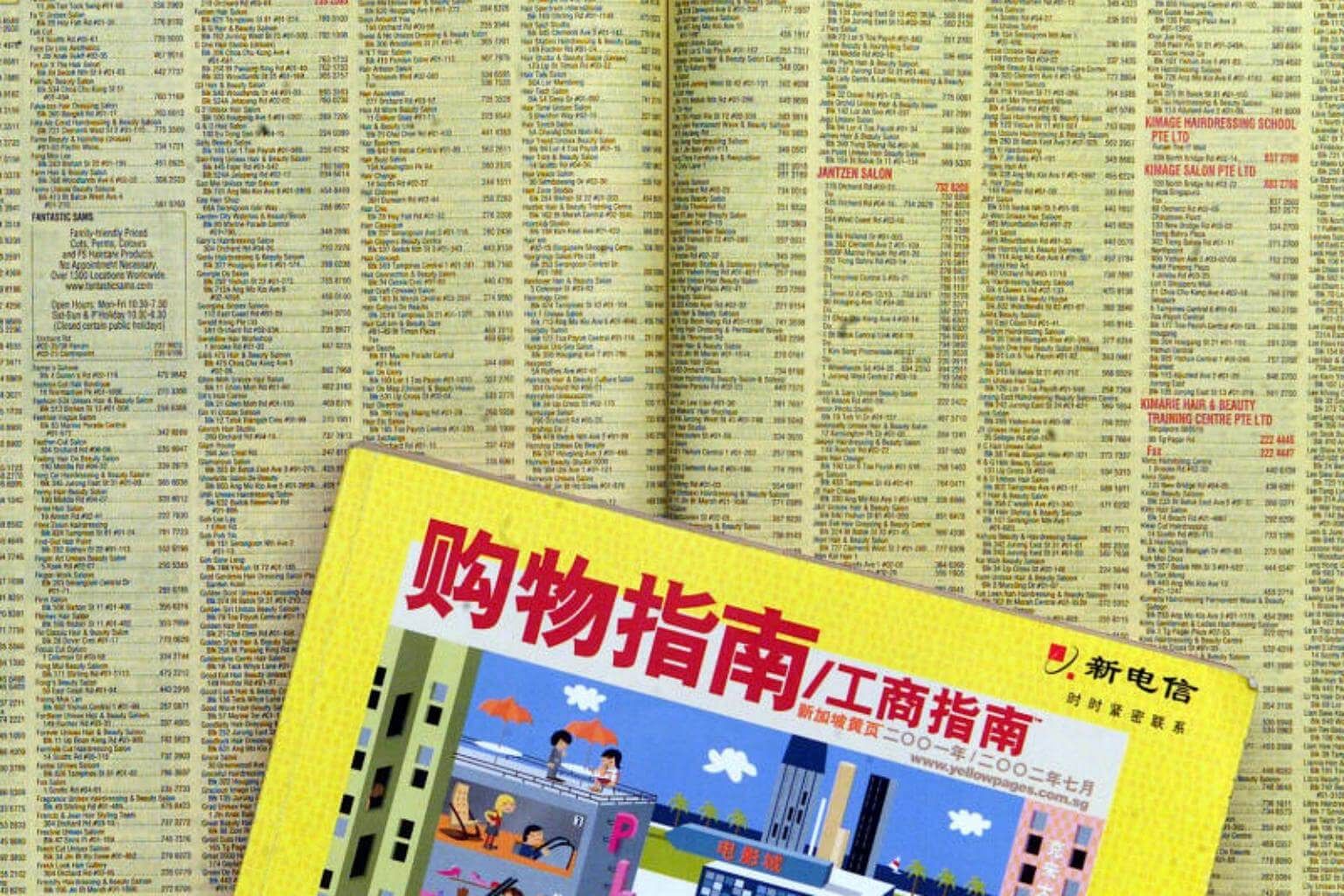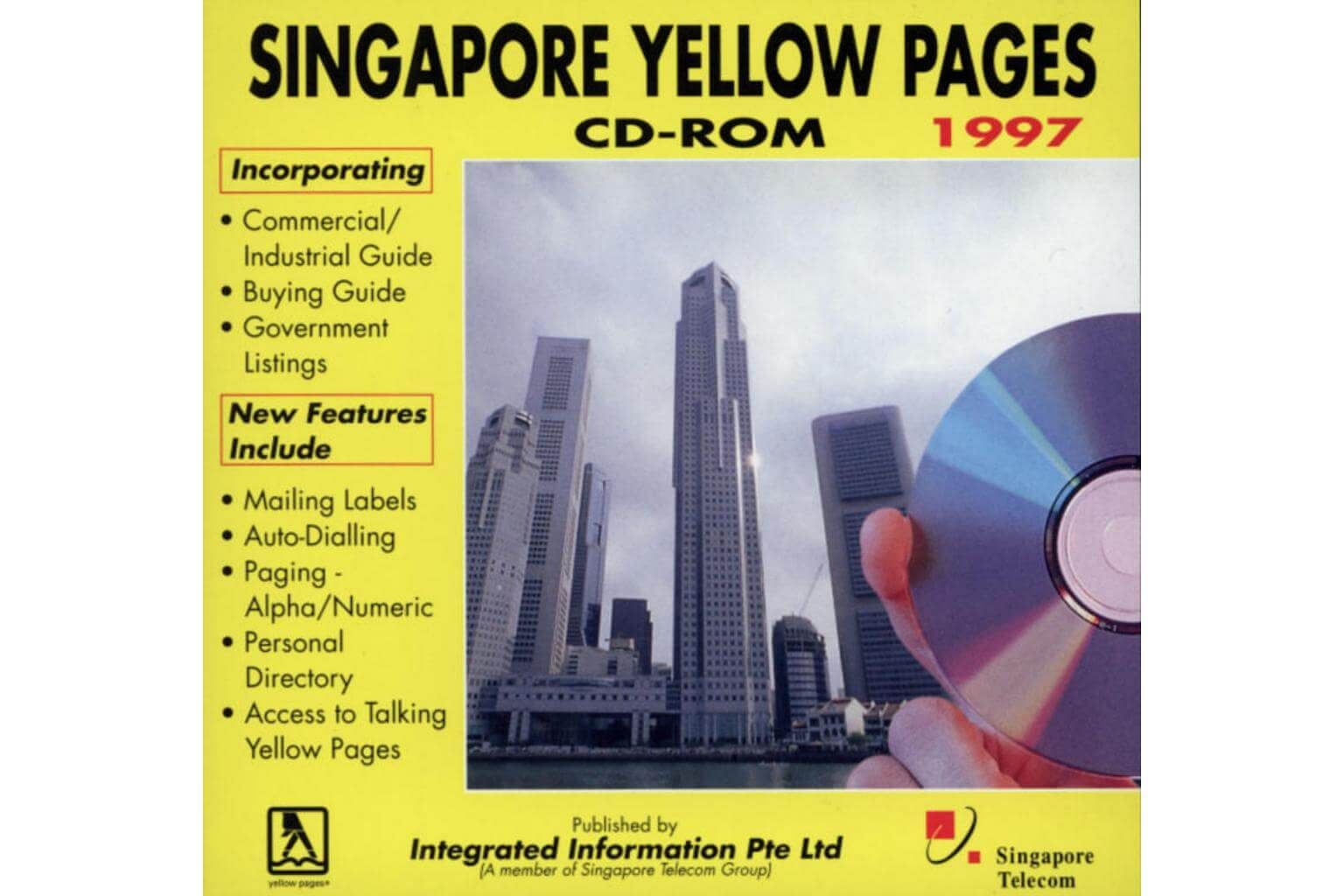SINGAPORE - As part of its restructuring process, Global Yellow Pages (GYP) announced on Tuesday (Aug 1) that it will stop publishing print directories from next year.
For those who are mature enough to remember its advertisement "Let your fingers do the walking", queueing up at designated spots to collect Yellow Pages directories was almost a yearly ritual for many of them in Singapore.
The final print edition will be distributed later this year.
GYP will focus on its core real estate business. Digital products of Yellow Pages will continue operating under a new company, and print-only advertisers can shift to the online platforms.
Here are seven things you may want to know about the Yellow Pages:
1. Trying to find your crushee's home number or address?
With contact numbers at your finger tips now with the swipe of a thumb on your smartphones, it is hard to imagine a world without such a convenience.
But more than a decade ago, people relied on those thick books which publish lists of business and residential numbers in alphabetical orders. They have to manually flip through the pages to find any contact numbers or addresses.

2. Looking for a plumber?

The pervasiveness of the Internet in this modern era provides us with endless information about products and services.
But in the past when there was no Internet for one to surf, the thick books were a major platform for advertising.
3. It was something worth the wait

People, armed with notices mailed to them by Yellow Pages, had to head down to distribution spots set up by Yellow Pages around their estates, to collect two thick books - the White Pages and the Yellow Pages.
The queues were often long.
The White Pages contain the names, telephone numbers, and addresses of individuals with landline connections in the country, while the Yellow pages contain the names, telephone numbers, and addresses of commercial establishments and service providers in the country. The Yellow Pages are organised by category.
4. Some may need magnifying glass

The directories used to be in dual-column format, which meant there were only two columns per page. In 1965, the year that Singapore gained independence, the directories began adopting four-column pages.
5. The predecessor of 'Google Maps'?

It was in 2002 that the Yellow Pages made the digital leap, with residential listings going onto CD-ROMs (which themselves are now products from eons ago).
SingTel Yellow Pages, which issued the phone books, offered hyperlinks and interactive road maps on the CD-ROMs, allowing consumers to get on the Internet to pinpoint the exact location of the addresses they want. This could probably be seen as the predecessor of "Google Maps".
6. Talking-point content to draw netizens

The Yellow Pages website has recently launched content on its website, in which it provides news and lifestyle pieces for netizens.
This shift in strategy is evident. The site offers fodder to netizens, including an article which noted that people had focused more on capturing their visit to Yayoi Kusama exhibition on social media, than on truly appreciating her art.
7. Other innovative uses, including as a tool for punishment

The thick directories have entered folklore with its common alternative uses. Popular ones included it being used as a paperweight, or to raise height of items including computer monitors, or as a method of punishment, with misbehaving kids told to hold the thick book above their heads for an extended period of time.


